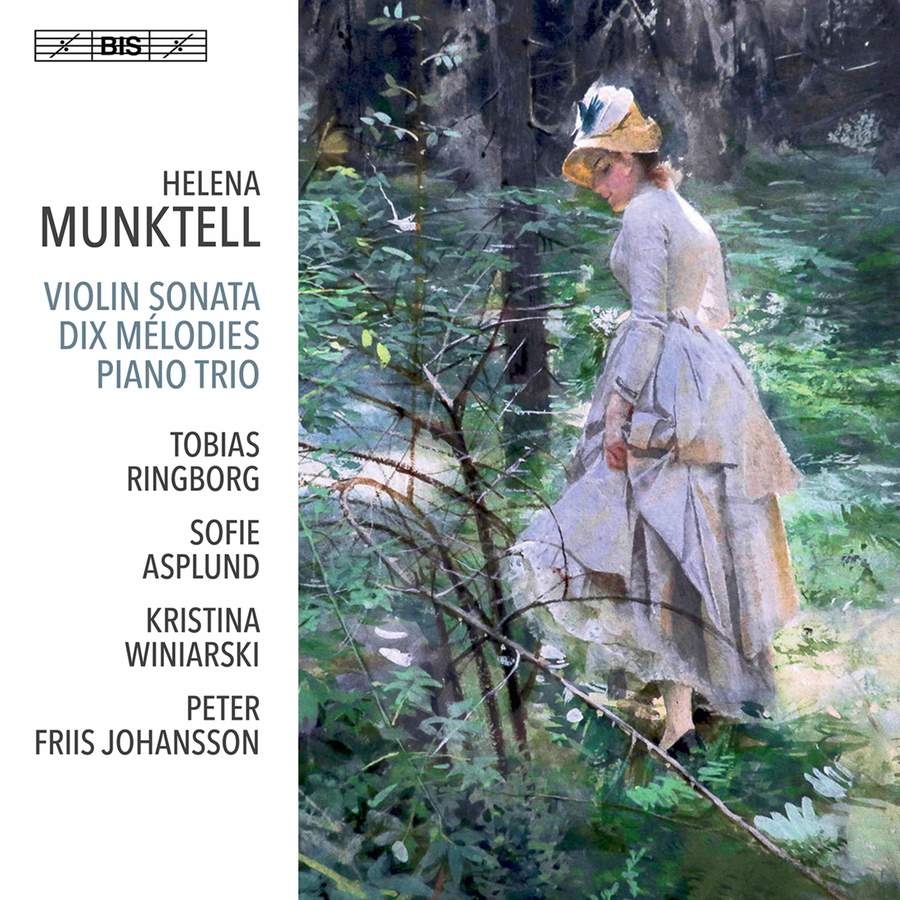MUNKTELL Violin Sonata. Dix Mélodies. Piano Trio
View record and artist detailsRecord and Artist Details
Genre:
Chamber
Label: BIS
Magazine Review Date: 03/2021
Media Format: Super Audio CD
Media Runtime: 74
Mastering:
DDD
Catalogue Number: BIS2204

Tracks:
| Composition | Artist Credit |
|---|---|
| Violin Sonata |
Helena Munktell, Composer
Peter Friis Johansson, Piano Tobias Ringborg, Violin |
| 10 Mélodies |
Helena Munktell, Composer
Peter Friis Johansson, Piano Sofie Asplund, Soprano |
| Kleines Trio |
Helena Munktell, Composer
Kristina Winiarski, Cello Peter Friis Johansson, Piano Tobias Ringborg, Violin |
Author: Andrew Mellor
Helena Munktell (1852-1919) studied singing and piano in Stockholm, Vienna and Paris, was elected to the Swedish Royal Academy in 1915 and was a founder member of the Society of Swedish Composers. At the start of her career she got on better in France than at home. The Gallic influence on her 1905 Violin Sonata, the most significant work included here, is obvious. Franck’s famous Sonata was the model but there is a more fin de siècle mood to Munktell’s piece.
The Scherzo second movement (of four) has the most memorable theme, built on a snappy rhythm. The version known before inexplicable cuts were made by the composer is included as an appendix. The reprise of the Scherzo’s theme in the finale is the sonata’s moment of triumph. Beyond that, the piece is never less than fluent but a residual feeling prevails of plenteous figuration and transition at the expense of actual material. More fire, charisma or willingness to seize the music by the scruff of the neck in Tobias Ringborg’s refined playing might have helped argue otherwise.
The preparatory Kleines Trio can be similarly fey and lacking a signature, but for a slow movement that reveals Munktell’s ability to derive something of interest from subtle structural devices such as overlapping. More of that is found in Dix Mélodies, to poems by Amédée-Landély Hettich or her translations of Swedish ones. Again, the slower, emotionally heavier songs have most impact and allow Munktell to demonstrate her propensity to mine something multilayered from something simple. That’s particularly true of the two cradle songs but there are further examples in ‘Si tu le voulais’. ‘Fascination’ has something of Grieg’s Nordic fantasy realm about it, opening with anti-metropolitan cragginess. ‘Cantilène’ comes from Munktell’s comic opera I Firenze, the first by a woman to be staged at the Royal Swedish Opera. Sofie Asplund’s pearly tone and innocent simplicity suit them well, as does Peter Friis Johansson’s knowing accompaniment.
Discover the world's largest classical music catalogue with Presto Music.

Gramophone Digital Club
- Digital Edition
- Digital Archive
- Reviews Database
- Full website access
From £8.75 / month
Subscribe
Gramophone Full Club
- Print Edition
- Digital Edition
- Digital Archive
- Reviews Database
- Full website access
From £11.00 / month
Subscribe
If you are a library, university or other organisation that would be interested in an institutional subscription to Gramophone please click here for further information.




